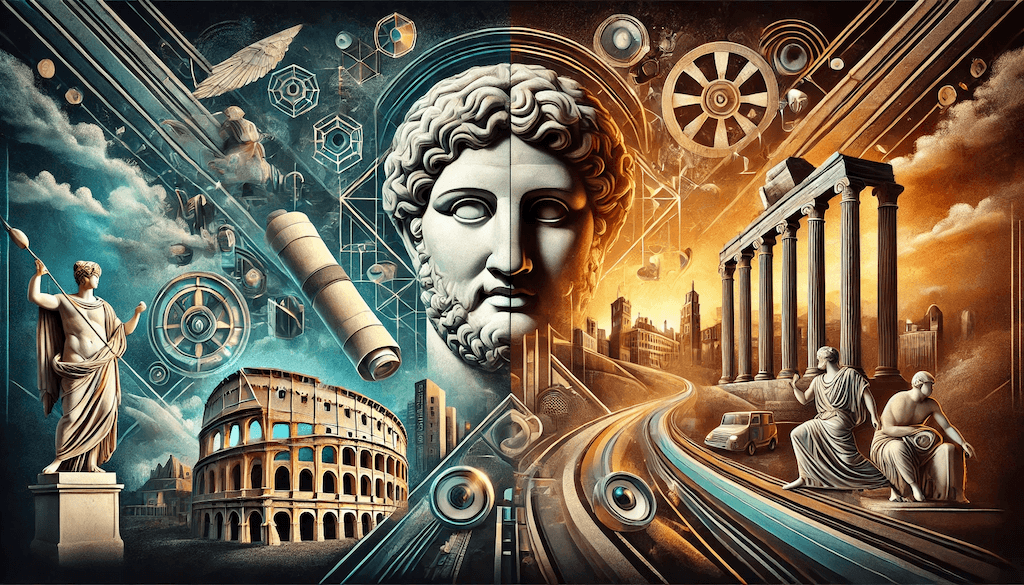The Hidden Power of Modern Stoicism: Unveiling Ancient Secrets

In the age of rapid technological advances and relentless information overload, the ancient philosophy of Stoicism has emerged from the shadows, shrouded in mystery and controversy. How could the wisdom of dead philosophers hold the key to navigating our modern labyrinth? The answer lies in the hidden power of Stoicism—a power often misunderstood, yet profoundly transformative.
The Enigmatic Origins
Imagine the bustling streets of ancient Rome, where emperors and slaves alike sought solace in the teachings of Stoicism. It was a time of political intrigue, moral decadence, and societal upheaval. The Stoics, led by the enigmatic figures of Marcus Aurelius, Seneca, and Epictetus, whispered secrets of resilience and inner peace, secrets that have withstood the test of time.
Fast forward to today, where the echoes of their wisdom resonate in the corridors of Silicon Valley and the boardrooms of Wall Street. But what is it about Stoicism that makes it so compelling, so controversial? The answer may surprise you.
The Secret of Perception
Consider this: in a world obsessed with control, the Stoics preached a radical acceptance of the uncontrollable. Epictetus, a former slave turned philosopher, taught that it’s not the events themselves that disturb us, but our interpretation of them. This simple yet profound insight has sparked debates among scholars and psychologists alike. Could it be that our suffering is self-inflicted, born from distorted perceptions?
Take the case of a high-powered executive, drowning in stress and anxiety. Traditional wisdom would suggest therapy or medication. But what if the solution lies in altering perception, in seeing obstacles not as roadblocks but as opportunities for growth? This controversial idea has found champions among modern thinkers, from Tim Ferriss to Ryan Holiday, who swear by the transformative power of Stoic practices.
The Controversial Practice of Negative Visualization
Negative visualization, a core Stoic exercise, involves imagining the loss of the things we cherish. To the uninitiated, this practice seems morbid, even masochistic. But delve deeper, and you’ll find a paradoxical truth: by confronting our deepest fears, we can cultivate gratitude and resilience.
Imagine waking up every day, visualizing the loss of your job, your health, or your loved ones. This isn’t a call to pessimism but a strategy to appreciate the present moment and fortify the mind against future hardships. Critics argue that this practice borders on the fatalistic, yet its proponents claim it offers an unparalleled clarity and strength.
Stoicism in the Shadows of Modern Society
The resurgence of Stoicism in contemporary culture is not without its detractors. Some accuse modern Stoics of cherry-picking convenient teachings while ignoring the philosophy’s more demanding tenets. Others see it as a form of escapism, a way to numb oneself to the harsh realities of life.
However, the true power of Stoicism lies in its ability to adapt and evolve. From ancient gladiators to modern entrepreneurs, the Stoic principles of courage, wisdom, and self-discipline have provided a framework for navigating the chaos of life. It’s a philosophy that challenges us to look beyond the surface, to question our assumptions, and to find strength in adversity.
The Mysterious Allure of Stoic Practices
What drives successful individuals to embrace Stoicism? Perhaps it’s the allure of its enigmatic simplicity. In a world of complexity, Stoicism offers a return to basics—a focus on what truly matters. It’s a call to cultivate inner virtues rather than external successes, to find peace within rather than seeking it outside.
Consider the practice of journaling, advocated by Marcus Aurelius in his “Meditations.” This daily ritual, simple yet profound, has been adopted by countless modern Stoics. It’s a space to reflect, to confront one’s thoughts, and to seek continuous improvement. It’s a practice shrouded in the mystery of self-discovery, a journey inward that reveals hidden depths.
Unveiling the Hidden Power
As you navigate the twists and turns of modern life, remember that the secrets of Stoicism are not just relics of the past. They are living principles, waiting to be rediscovered and applied. Whether you’re facing personal challenges or professional setbacks, the Stoic way offers a path to resilience and inner peace.
The true power of Stoicism lies not in grandiose declarations but in its quiet, steadfast approach to life’s trials. It’s a philosophy that invites us to look within, to find strength in our vulnerabilities, and to embrace the uncertainties of existence.
So, as you ponder the mysteries of life, consider the ancient wisdom of Stoicism. Let it guide you through the labyrinth, revealing hidden strengths and uncharted possibilities. In the end, the journey is as much about self-discovery as it is about overcoming obstacles. And perhaps, just perhaps, the secrets of the Stoics will lead you to a deeper understanding of yourself and the world around you.